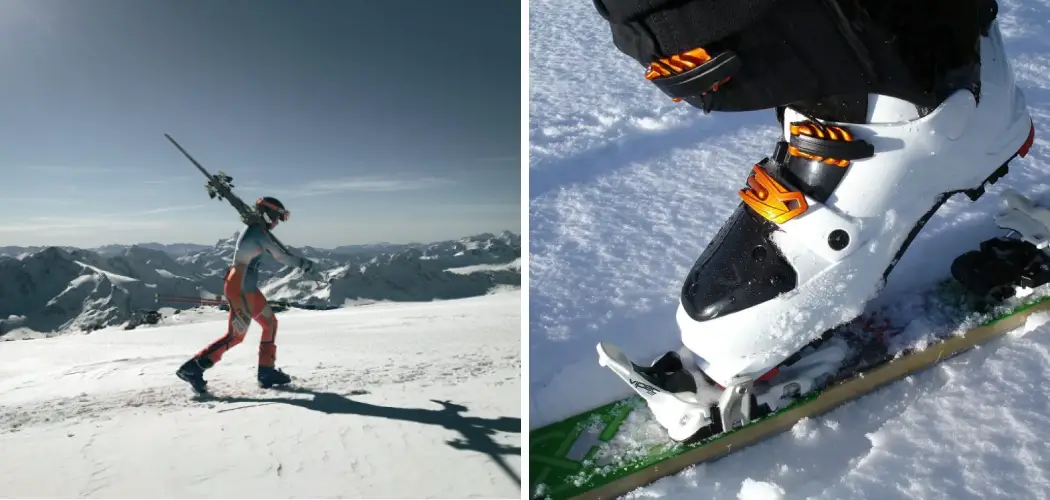Skiing is a sport that requires a lot of gear, and one of the most important pieces of equipment is ski boots. However, walking in ski boots can be quite tricky and uncomfortable, especially for beginners. In this blog post, we will be sharing with you some tips and tricks on how to walk in ski boots comfortably and safely.
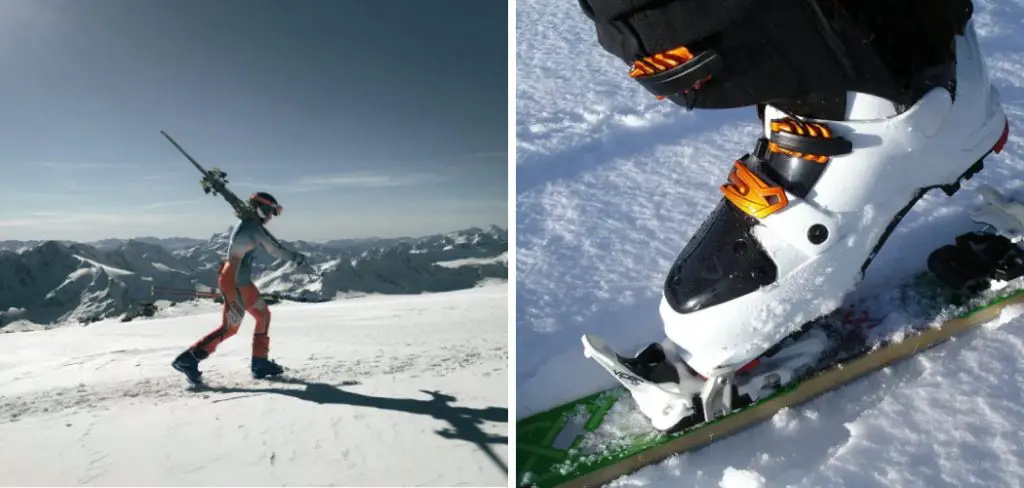
Can You Walk in Ski Boots?
Skiing is a thrilling winter sport that many people enjoy, but it requires specific equipment, including ski boots. For those who have never had the pleasure of wearing ski boots, you might be wondering if they’re comfortable or even possible to walk in. The answer is a bit complicated.
While ski boots are designed for easy movements on the slopes, walking in them can be difficult. They are stiff, heavy, and lack flexibility, making walking challenging. However, with a little practice and patience, it’s certainly possible to walk in them for short distances. So, if you’re planning a ski trip, it’s a good idea to practice walking in your ski boots beforehand to avoid any unwanted discomfort.
Why Should You Walk in Ski Boots?
Walking in ski boots may seem like a daunting task, but it is actually quite beneficial for skiers. For starters, wearing your boots while walking helps you get used to the weight and feel of them, which can improve your balance on the slopes. Additionally, walking around in your ski boots can also help break them in and make them more comfortable to wear during a long day on the mountain.
Furthermore, walking in your boots can prevent you from slipping on icy or slick surfaces, making it easier and safer to navigate around the ski resort. So, don’t be afraid to stroll in your ski boots – your feet (and skiing skills) will thank you!
How to Walk in Ski Boots: A Beginner’s Guide
1. Loosen the Buckles
The buckles on your ski boots are meant to provide a snug fit to your feet while skiing, but they can also make walking uncomfortable if they are too tight. Before walking in your ski boots, loosen the buckles slightly to allow for some mobility in the ankle and foot area.

2. Bend Your Knees
Ski boots are stiff and inflexible, making walking in them with a straight posture difficult. To make walking easier, bend your knees slightly while taking small steps. This will give you more control over your movements.
3. Walk on the Balls of Your Feet
The soles of ski boots are designed to grip the snow and ice while skiing, but they can also make walking feel awkward and unsteady. To avoid slipping, walk on the balls of your feet instead of your heels. This will give you more traction and a better grip.
4. Take Short Steps
Taking big steps can be difficult in ski boots and cause you to lose your balance. To make walking easier, take short and measured steps instead of long strides. This will help you maintain your balance while walking.
5. Lean Forward Slightly
Ski boots are designed for skiing, so they have a slightly forward tilt that makes it easier to keep your balance while skiing. When walking in ski boots, lean slightly forward at the waist. This will help you stay balanced and comfortable.
6. Move Your Ankles
Ski boots are stiffer than regular shoes, so they can be uncomfortable when walking for long periods. To make walking more bearable, move your ankles around slightly while walking. This will loosen the boots and provide some relief from the stiffness.
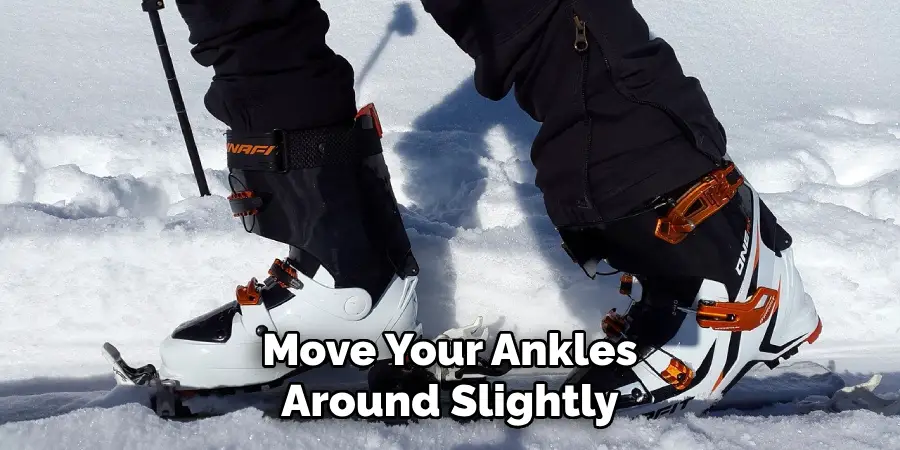
7. Place Your Weight on the Heel
Ski boots are designed with a heel lift to keep your weight toward the back of your foot for skiing. When walking in ski boots, place your weight on the heel instead of the toe area. This will help keep your balance and make walking easier.
Following these tips can help you learn how to walk in ski boots easily and confidently whether a beginner or an experienced skier, mastering the art of walking in ski boots is essential for a successful day on the slopes!
5 Considerations Things When You Need to Walk in Ski Boots
1. Sizing
When walking in ski boots, the most important consideration is sizing. Ski boots should fit snugly but not too tight, which can cause discomfort and injury. It’s best to try on several pairs of boots before settling on one that fits properly. If possible, have a professional fitting done at your local ski shop to ensure you get the right size and fit for your feet.
2. Flexibility
Another important consideration when choosing ski boots is flexibility. Ski boots should be flexible enough to allow for comfortable walking while still providing enough support for skiing. Look for boots with adjustable flex ratings so you can customize the amount of flex according to your skill level and skiing style.
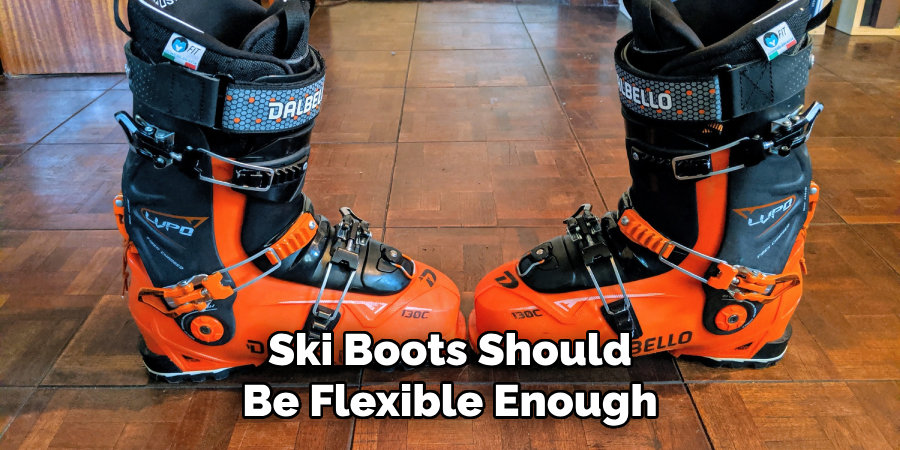
3. Comfort
Comfort is also key when choosing ski boots, as you don’t want them to be uncomfortable while walking or skiing. Look for padded linings, cushioned insoles, and shock-absorbing soles that provide cushioning and support without sacrificing performance or control on the slopes.
4. Weight
Weight is another factor to consider when selecting ski boots, as heavier boots can be more difficult to walk in than lighter ones. Look for lightweight materials such as carbon fiber or polyurethane that provide good support without adding extra weight to your feet.
5. Durability
Finally, make sure you choose a pair of ski boots built to last through all terrain and conditions so they won’t need replacing after just one season of use. Look for features such as reinforced toe boxes and reinforced heel cups to protect from wear and tear over time.
5 Benefits of Walk-in Ski Boots
1. Increased Stability on the Slopes
Walk-in ski boots provide increased stability on the slopes, as they are designed to fit snugly around your leg and foot. This helps to reduce the risk of ankle injuries, as it allows your feet to move naturally while skiing. Walk-in ski boots also have a higher degree of support than regular ski boots, which can help to reduce fatigue and improve performance on the slopes.
2. Improved Comfort
Walk-in ski boots are designed with comfort in mind and feature several features that make them more comfortable than regular ski boots. These features include cushioned liners that mold to your feet, shock-absorbing soles, and adjustable straps that allow you to customize the boot’s fit for added comfort.
3. Reduced Foot Fatigue
Walk-in ski boots are designed to be lightweight and flexible, which reduces foot fatigue while skiing. This is especially beneficial for skiers who spend long days on the slopes or are prone to foot fatigue due to ill-fitting regular ski boots.
4. Easy Entry and Exit
Walk-in ski boots are designed with an easy entry/exit system that allows you to quickly get into and out of your boots without struggling with laces or buckles whenever you want to go skiing. This makes them ideal for beginner skiers who may not be used to putting on traditional ski boots or those who want an easier way to get ready for a day on the slopes.
5. Less Maintenance Required
Regular ski boots require frequent maintenance, such as waxing, tightening laces, and replacing parts over time due to wear and tear from use on the slopes. However, walk-in ski boots require far less maintenance since they don’t have any laces or buckles that need adjusting or replacing over time.
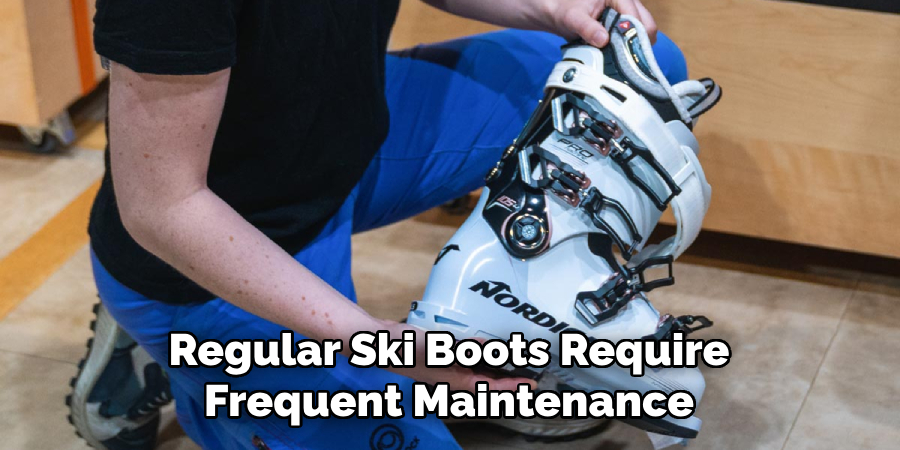
4 Common Mistakes People Make When Trying to Walk in Ski Boots
1. Not Wearing Socks
One of the most common mistakes people make when trying to walk in ski boots is not wearing socks. Ski boots are designed to fit snugly around your feet, and if you don’t wear socks, the boots can rub against your skin and cause blisters and other irritation. It’s important to wear thick, cushioning socks when walking in ski boots to provide a comfortable barrier between your feet and the boot.
2. Not Lacing Up Properly
Another mistake people make when walking in ski boots is not lacing up properly. Ski boots should be laced up tightly to fit snugly around your foot and ankle. This will help keep your foot secure in the boot while walking, preventing it from slipping out of place or causing blisters.
3. Not Taking Breaks
It’s important to take breaks when walking in ski boots as they can be quite uncomfortable if worn for too long without a break. Take short breaks every few minutes to give your feet time to rest and adjust to the boot before continuing with your walk. This will help prevent pain and discomfort caused by prolonged boot use.
4. Not Wearing Insoles
Finally, many people forget to wear insoles when walking in ski boots, leading to foot pain and discomfort over time. Insoles provide extra cushioning for your feet and can help reduce friction between your feet and the boot, making it more comfortable for long walks or hikes on snow-covered terrain.
Conclusion
Walking in ski boots can be a daunting experience for beginners, but with these tips and tricks, you can walk comfortably and safely in no time. Remember to loosen the buckles, bend your knees, walk on the balls of your feet, take small steps, and use your poles. These simple techniques will make walking in ski boots much easier and more enjoyable. Thanks for reading our post about how to walk in ski boots.

